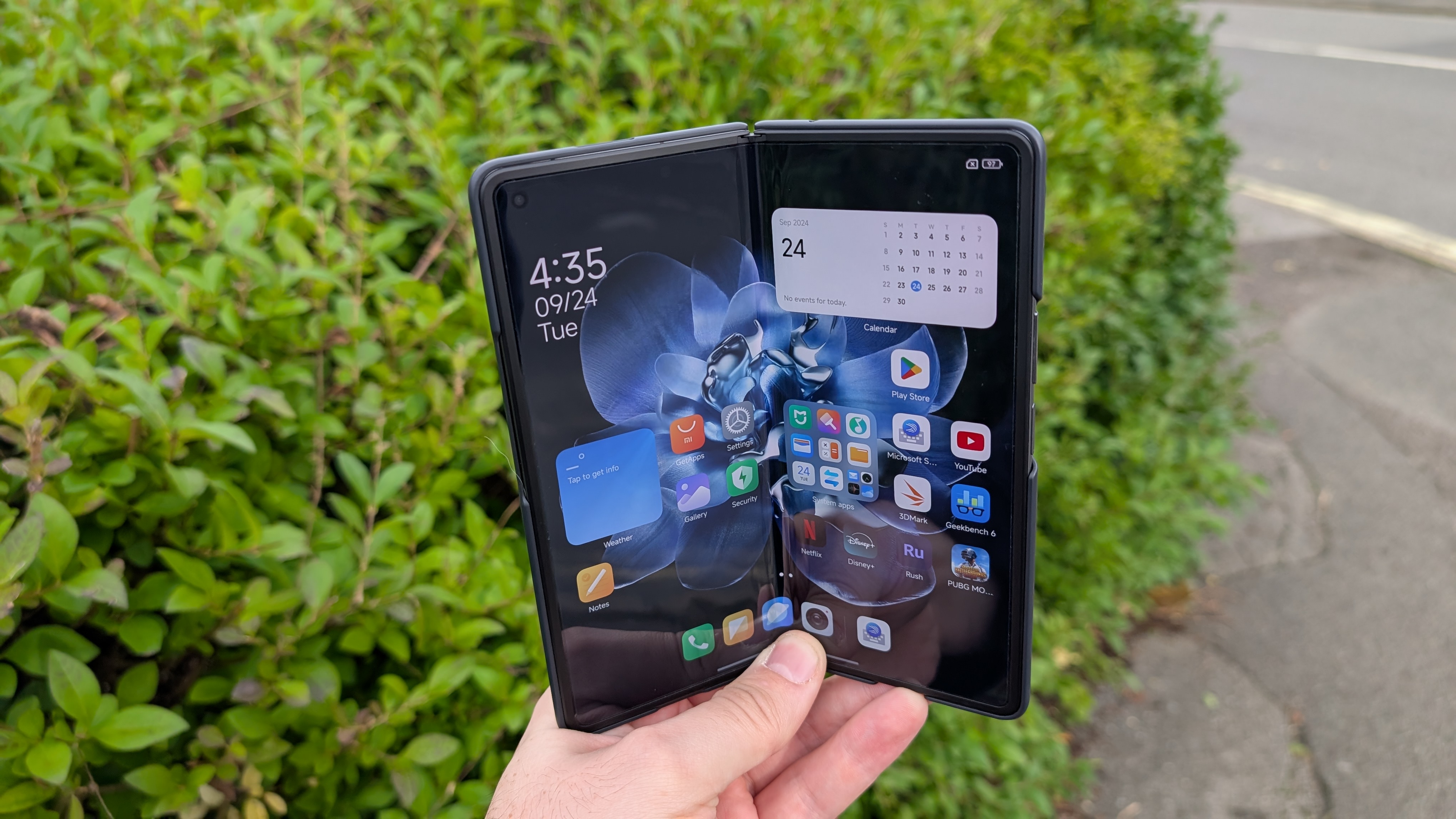
The race to sell the best foldable phone has been heating up the last couple of years. With all that extra competition, it’s crucial that legacy foldable-makers like Xiaomi have a strong lineup if they want to stay on top of the game.
The Chinese phone maker's latest offering is the Xiaomi Mix Fold 4, which launched in China back in July and will be heading internationally in the near future — though, like other Xiaomi handsets, it likely won’t come to the U.S., which is disappointing given what this phone brings to the table.
On paper, the Mix Fold 4 offers quite a lot. It’s got a slim and lightweight design, one of the largest foldable displays on the market, four rear camera lenses with Leica tuning, and a larger 5,100 mAh battery with a new ultra-thin vapor cooling chamber.
As you’ll read in my full Xiaomi Mix Fold 4 review, this is a fantastic phone to have if you’re looking for a foldable with a great screen and longer battery life. That said, it isn’t going to be the right phone for everyone, especially if you’re interested in camera quality above all else.
Xiaomi Mix Fold 4 review: Specs
Xiaomi Mix Fold 4 review: Price & availability
Xiaomi has confirmed that the Mix Fold 4 will get a global release, following its debut back in July in China. However, at the time of writing, there’s no more information on when the phone might reach other markets or how much it will cost in different regions.
The one thing we can safely assume is that there won’t be an official U.S. launch, as has been the case for Xiaomi phones in the past.
In China you’ll be expected to pay CNY 8,999 (roughly $1,280 / £955 / AU $1,885) for a Mix Fold 4 with 12GB of RAM and 256GB of storage. Upping that price to CNY 9,999 ($1,422 / £1,062 / AU$2,094) will get you 16GB of RAM and 512GB of storage, while the priciest 16GB/1TB model costs CNY 10,999 ($1,564 / £1,168 / AU $2,304).
The converted price of the base model may sound cheap compared to the likes of the Samsung Galaxy Z Fold 6 or Google Pixel 9 Pro Fold, which start at $1,899 and $1,799 respectively. But it's unlikely we'll see a direct price conversion when Xiaomi does set prices on the Mix Fold 4 in other markets.
Xiaomi Mix Fold 4 review: Design and display
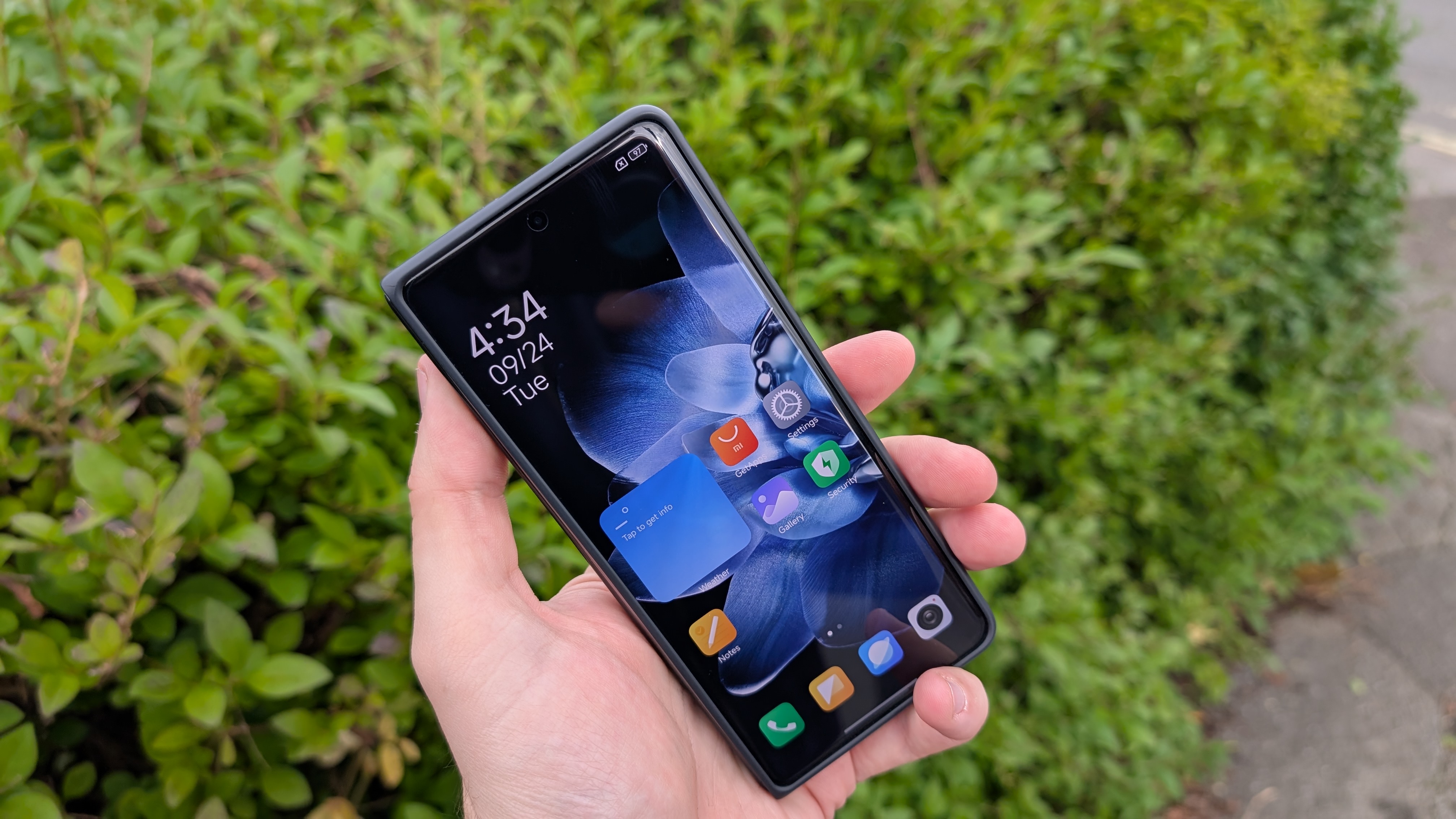
The Xiaomi Mix Fold 4 features two displays, the first of which is a 6.56-inch cover display sporting 1080p resolution and a pretty-standard feeling 21:9 aspect ratio. That display is an LTPO panel, offering an adaptive 1-120Hz refresh rate alongside HDR10, Dolby Vision and Xiaomi's Shield Glass.
Unlike some foldables, the shape is familiar enough that you shouldn’t have trouble using the phone in its folded state. The closed Mix Fold 4 is noticeably thicker than most people are probably used to, with a thickness of 9.5mm/0.37 inches. That said, the phone is still thinner than a lot of its rivals, even when closed up.
Opening up the phone reveals a 7.98-inch foldable display, also sporting a 1-120Hz LTPO panel, HDR10+, Dolby Vision, plus a resolution of 2224 x 2488. Brightness is rated for 3,000 nits of peak brightness or 1,700 nits in “high brightness mode.”
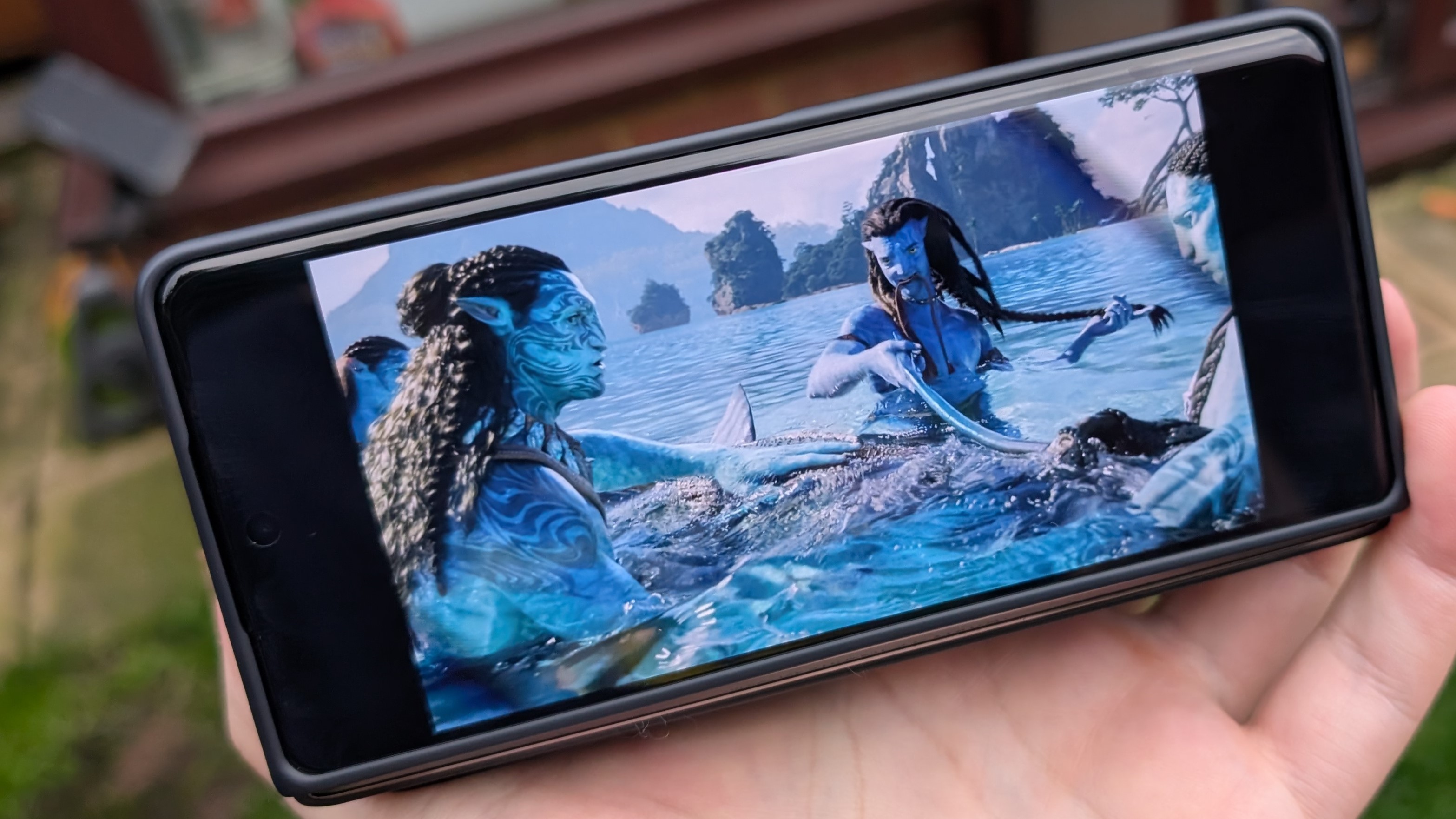
Both displays are pretty nice, with no serious issues to speak of. Watching Avatar: The Way of Water on Disney Plus was an enjoyable experience, though the excessive black space on the larger foldable display was a little distracting. I wouldn’t say the display is anything to write home about — just that it should be plenty satisfactory for what you need.
There’s a satisfying snap when you unfold the Mix Fold 4's inner screen, and suddenly all that extra bulk slips away. For someone with hands as large as mine, you might find yourself defaulting to using the interior screen just to avoid having to hold what feels like a pretty bulky folded phone. I tended to hold onto the phone on each side and use my thumbs, only switching to a single hand if I needed to reach the far corners. Fortunately Mix Fold 4's 8-ounce weight wasn’t too much to make this a taxing experience.
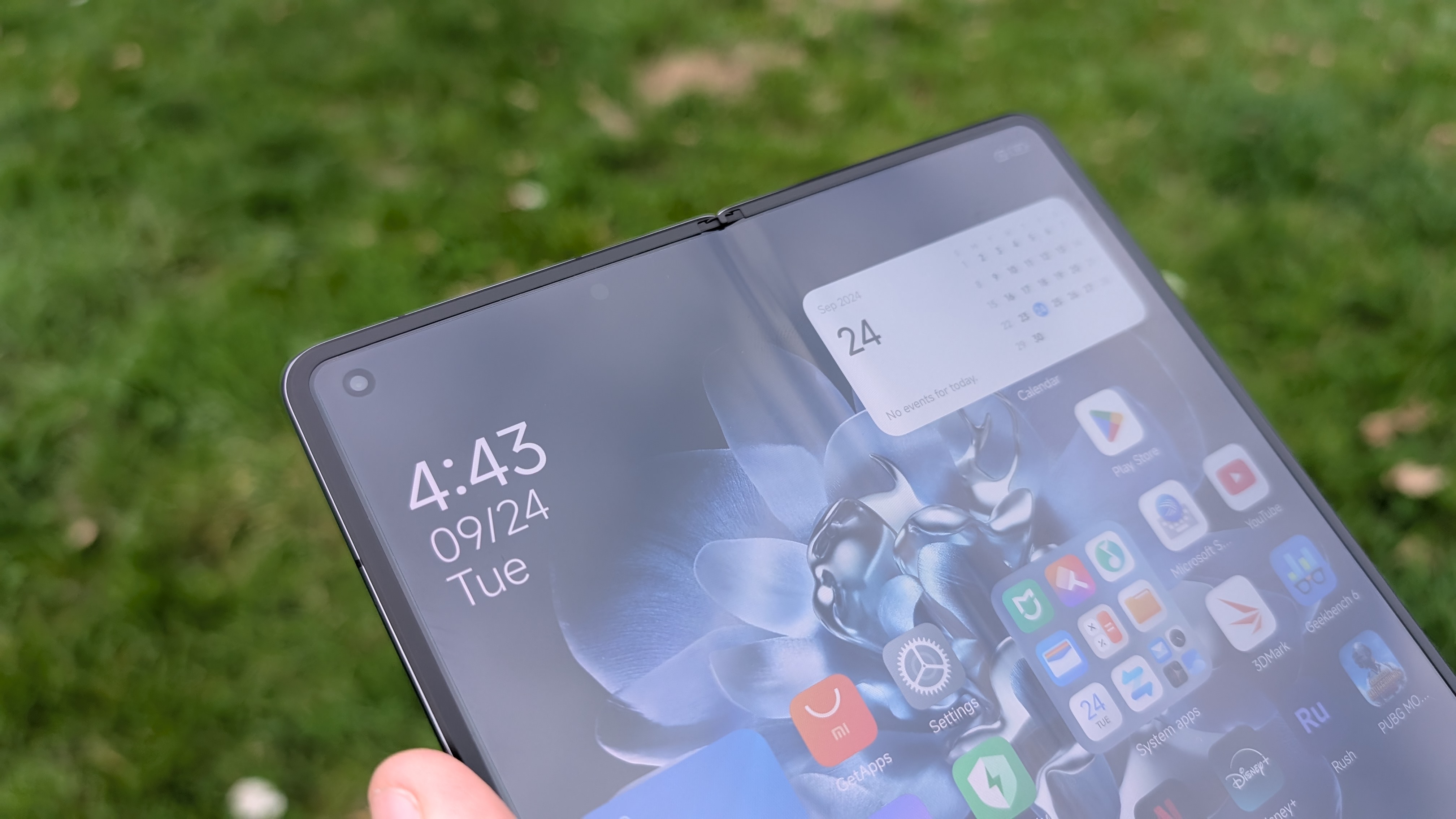
While a number of Chinese foldables make their lack of a visible crease a selling point, the Xiaomi Mix Fold 4 can’t make those claims. As nice as the interior screen is, there’s no hiding the fact that it has a very noticeable crease down the middle. To make matters worse it’s deep enough to disrupt your flow when you swipe a fingerprint across the display.
That said, the hole-punch camera in the top right corner blends in very nicely with dark screens. So if you’re a big fan of dark mode, that camera is going to stay relatively well hidden. The corner angle isn’t ideal, though, but that’s not something that can't be helped since the center has a hinge in the way.
Unfortunately the rear camera bump on the Mix Fold 4 is pretty sizable, something a lot of Chinese brands (Xiaomi included) are guilty of adopting. While this camera bump isn't the worst I’ve ever seen, it still seems pretty thick.
Other points of note involving the Mix Fold 4's design include a fingerprint-scanning power button on the right side of the phone, and a silky smooth matte backplate. Unfortunately, while the backplate seems resistant to smudges and fingerprints, the same can’t be said for the cover display. If you’re using the Mix Fold 4 in its unfolded orientation regularly, you’re going to find you’ll need to frequently wipe away those smudges.
Xiaomi Mix Fold 4 review: Cameras
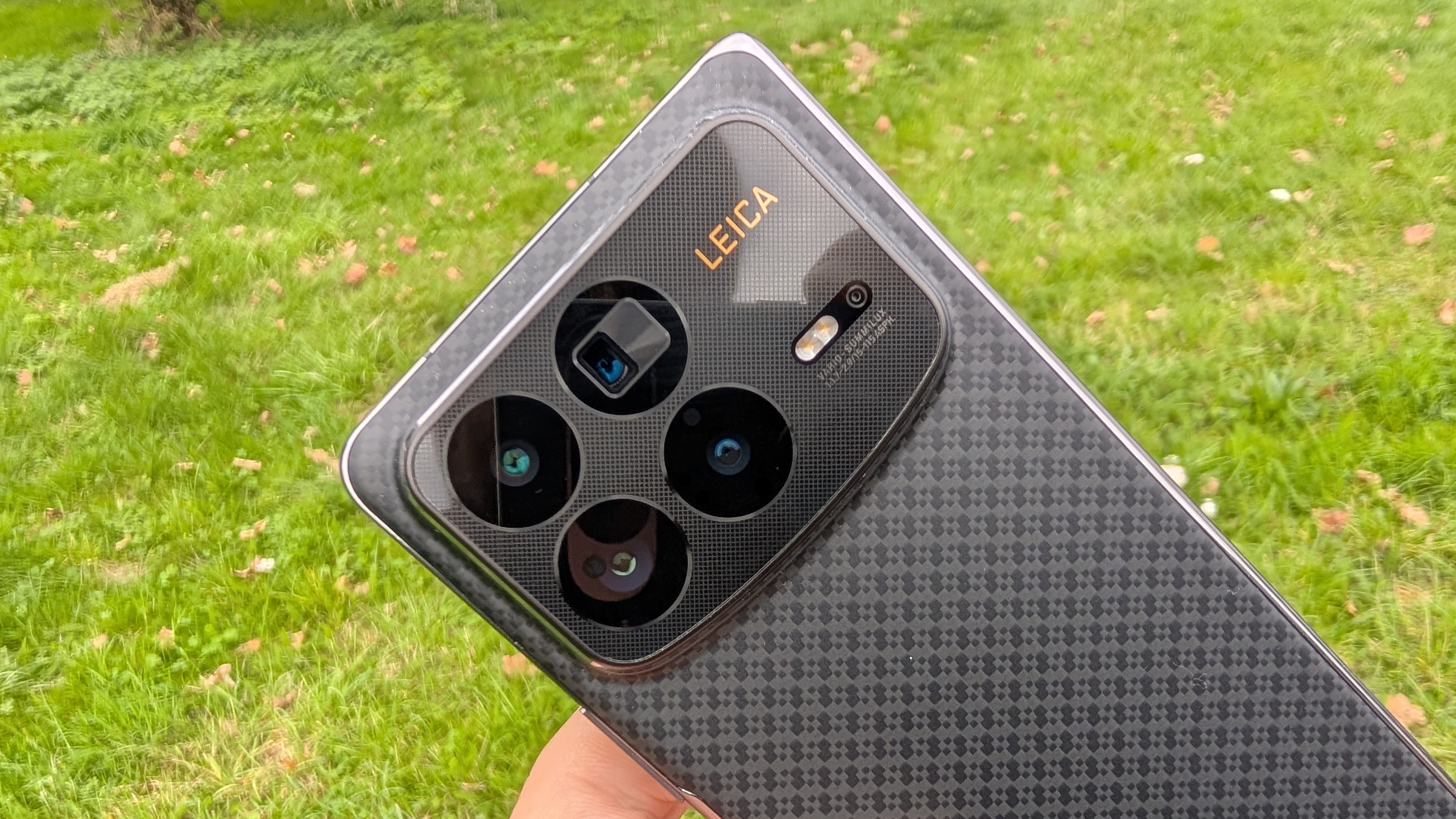
The Xiaomi Mix Fold 4 comes with a total of six camera lenses. Two of those lenses are 16MP selfie cameras, with one lens in each of the phone’s screens. On the back of the phone is a four-lens camera module made up of a 50MP main camera lens, a 50MP telephoto lens with 2x optical zoom, a 12MP ultrawide camera and a periscope telephoto lens offering 10MP resolution and 5x optical zoom.
The three main lenses feature Leica optics, though the periscope and selfie camera lenses don’t appear to. It’s an impressive set of specs, though it’s strange to see the high-resolution telephoto lens support a shorter optical zoom than its counterpart.
But, as ever, hardware specs only tell you so much about what a camera can do. So to find out what it’s capable of we put the Mix Fold 4 cameras through their paces against the Google Pixel 9 Pro, the best camera phone out there among Android devices.
Weirdly, the Mix Fold 4’s main camera strikes me more like an ultrawide camera than your typical wide-angle camera lens. The field of view is a lot more expnasive than the Pixel 9 Pro, but it also has an aura of a warped ultrawide photo that’s been corrected by software.
The Pixel definitely produces the better quality picture, and the closer you look the more you’ll be able to see it — especially with the thatched roof. Admittedly the Mix Fold 4 does have a brighter picture and more vivid colors here, which may be more to your taste.
Once inside, things don’t look so good for Xiaomi. The subject of the photo looks clear enough, but seemingly at the expense of everything around it. The Pixel 9 Pro doesn’t exactly show off the background in super-crisp quality, but it at least picks out the foreground details.
The wood grain is a perfect example, but at the same time, the Xiaomi picks out the individual grains of dust on the Lego set much more clearly. In fact I’d say that the Xiaomi’s take on the ship is a lot higher quality — though it has seemingly overemphasized the yellowing effect of my lights.
Moving to the ultrawide lens, things are a lot more clear cut. The overall quality on the Xiaomi can’t compete with the Pixel, no doubt thanks to the fact Google’s phone offers 4x more resolution on that particular lens. The smaller details are a lot harder to see on the Mix Fold 4, including the banner text in the doorway and the individual white marks in the stone.
Similarly, while the grass is something of a blur on the Pixel, the Xiaomi’s grass seems more like a large green mass than a lawn.
Unfortunately, the Mix Fold 4 doesn’t do so well in the telephoto zoom department. At 2x magnification the details are significantly blurrier than what you see in the Pixel 9 Pro shot. That’s on both the sign and building in focus, as well as the surrounding environment. Once again, the Mix Fold 4 has ramped up colors to unrealistic-looking levels, as if Xiaomi is trying to overcompensate for the gloomy fall weather.
Unsurprisingly, the secondary telephoto lens on the Mix Fold 4 also comes off worse for wear. The photo is a lot better than I expected, given the difference in resolution, and the vivid colors may actually do the Xiaomi some extra favors with this particular kind of stone building. But it’s still immediately clear that the Pixel is able to pick up the finer details of the masonry much more clearly.
I’m not a fan of what the Mix Fold 4 did on the selfie camera, washing out my complexion and making me look a lot pastier and ghostlike than I actually am in real life. In fact, the whole picture seems pretty washed out — in contrast to the vivid coloring on the main cameras.
That wouldn’t be so bad if the quality was a little clearer, but the Pixel managed to do a much better job capturing finer things like strands of hair and miniature leaves. In addition, the Pixel 9 Pro was able to showcase the fact that I do have some color in my cheeks (and plenty of freckles].
It’s much the same story with the Mix Fold 4’s interior camera, which is functionally the same camera as the one featured in the cover display. While it seems to have picked up some of the detail a little better, it doesn’t change the fact that the photo is looking pretty washed out and my skin has been smoothed into an almost consistent shade of beige. Once again the Pixel’s true-to-life camera performance wins out.
It should be no surprise that the Portrait shots have the same kind of problem. Xiaomi’s Portrait mode features something called “Master Portrait” which is turned on by default. This is an AI tool that has been trained on “aesthetics” from real photographers and is designed to look “a little more ideal than reality.” That may be, but I don’t really like the results.
It looks like my face has been glossed over and smoothened out in the Mix Fold 4 shot, to the point where it almost looks completely AI generated. It has that sheen you get from realistic image generators, and there’s a creepy uncanny valley feeling when you see that plastered over your own face. The Pixel, meanwhile, is much the same quality as the ordinary selfies — with my trademark scowl rather than a dead glazed over look.
That said the bokeh effect on the Mix Fold 4 is noticeably better. The phone managed to cut me out a little neater than the Pixel, while the background blurring is lighter and strong, putting the emphasis on me rather than my office and backyard.
Finally we come to low-light photography, and despite Google’s prowess in this field, I have to give the win to Xiaomi. The problem with the Pixel 9 Pro is that the image ended up washed out with poor detail in the background — despite the Pixel’s Night Sight being on for 2 seconds longer than Xiaomi’s equivalent.
While I’m still not a fan of Xiaomi’s over-exaggerated color — it makes the empty lifebuoy station look worse than it actually is — the Mix Fold 4 picked up a surprising amount of detail from the plant life in the background. It’s a lot easier to pick out individual leaves, rather than the greeny-gray mess the Pixel came out with.
I feel slightly disappointed by the camera quality of the Xiaomi Mix Fold 4. While the overall quality of the photos isn’t necessarily bad, they could still be a lot better. In fact it feels like Xiaomi is relying on post-shot processing a little too much, leading to photos that are unrealistically vivid or that just look a little strange.
However, the major complaint I have is with the selfie cameras. The rear cameras have their issues, but I wouldn’t say that they produce bad images. The front cameras on the Mix Fold 4 are another story, and the washed out images are in stark contrast to what the rear cameras produce. What's more, the beautifying effect is distractingly over the top. And the less said about Master Portrait’s AI-looking haze the better. If you plan on picking up a Mix Fold 4, be sure to turn that feature off in the Camera app.
Xiaomi Mix Fold 4 review: Performance
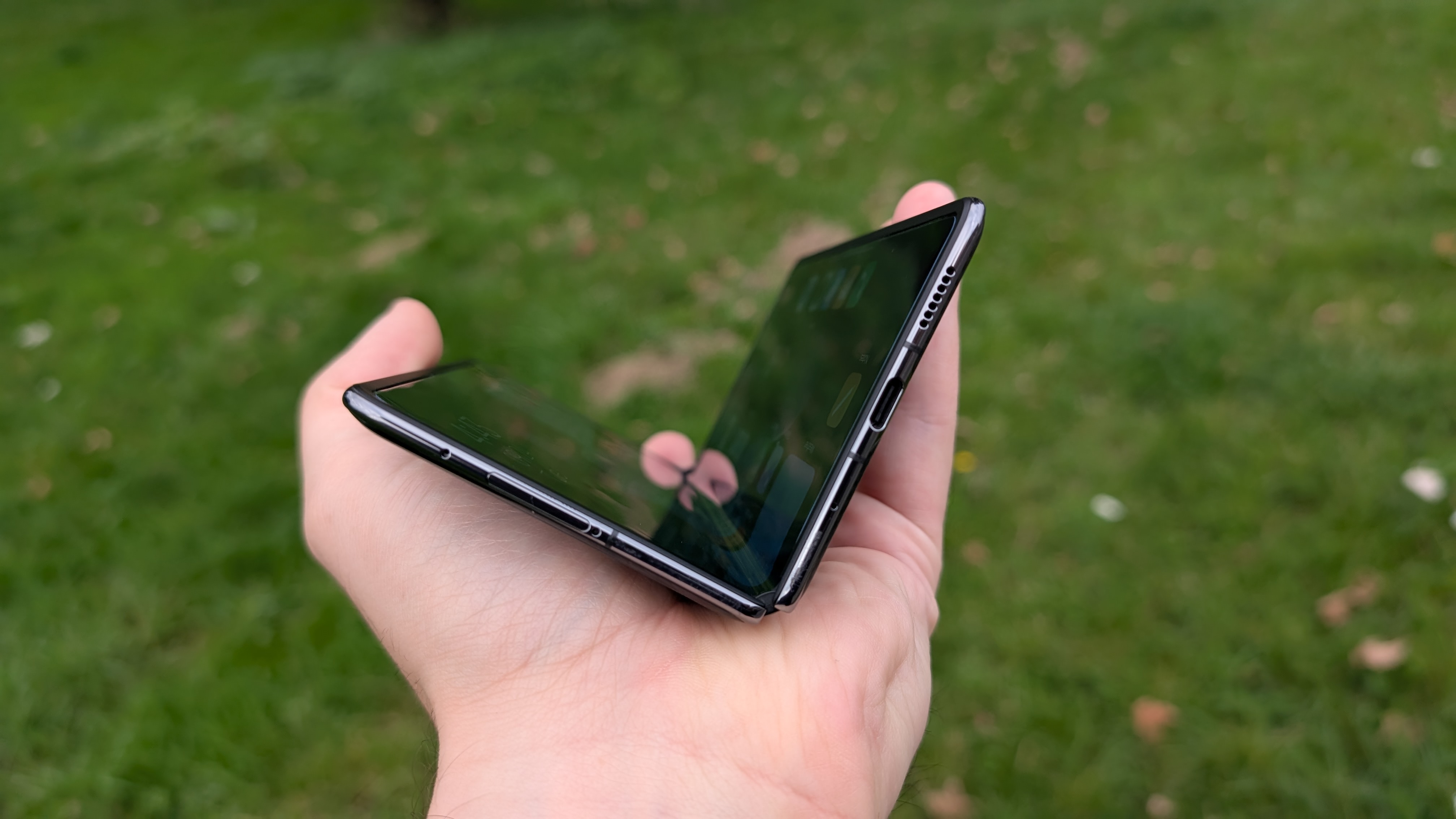
Like most other foldables released this year, the Xiaomi Mix Fold 4 runs on the Snapdragon 8 Gen 3 chipset. Qualcomm’s current flagship has already proven it can offer a significant amount of performance power. But not all phones actually bother to utilize it correctly, so how well does the Mix Fold 4 do in benchmarking?
Remarkably the Mix Fold 4 managed to outperform the Samsung Galax Z Fold 6 in Geekbench 6 benchmarking, scoring 2,203 on the single core tests and 7,020 on the multi-core tests. That also puts it significantly higher than the Pixel 9 Pro Fold’s Tensor G4, which is significantly underpowered, and the OnePlus Open which uses an older Snapdragon 8 Gen 2 chipset.
3DMark Wild Life Extreme testing also came out with similarly impressive scores, with an average score of 3,929 and 23.5 frames per second for the Mix Fold 4. While not quite enough to beat out the Honor Magic V3, it’s not off by much — and slightly above results on the Galaxy Z Fold 6 and OnePlus Open on this graphics test.
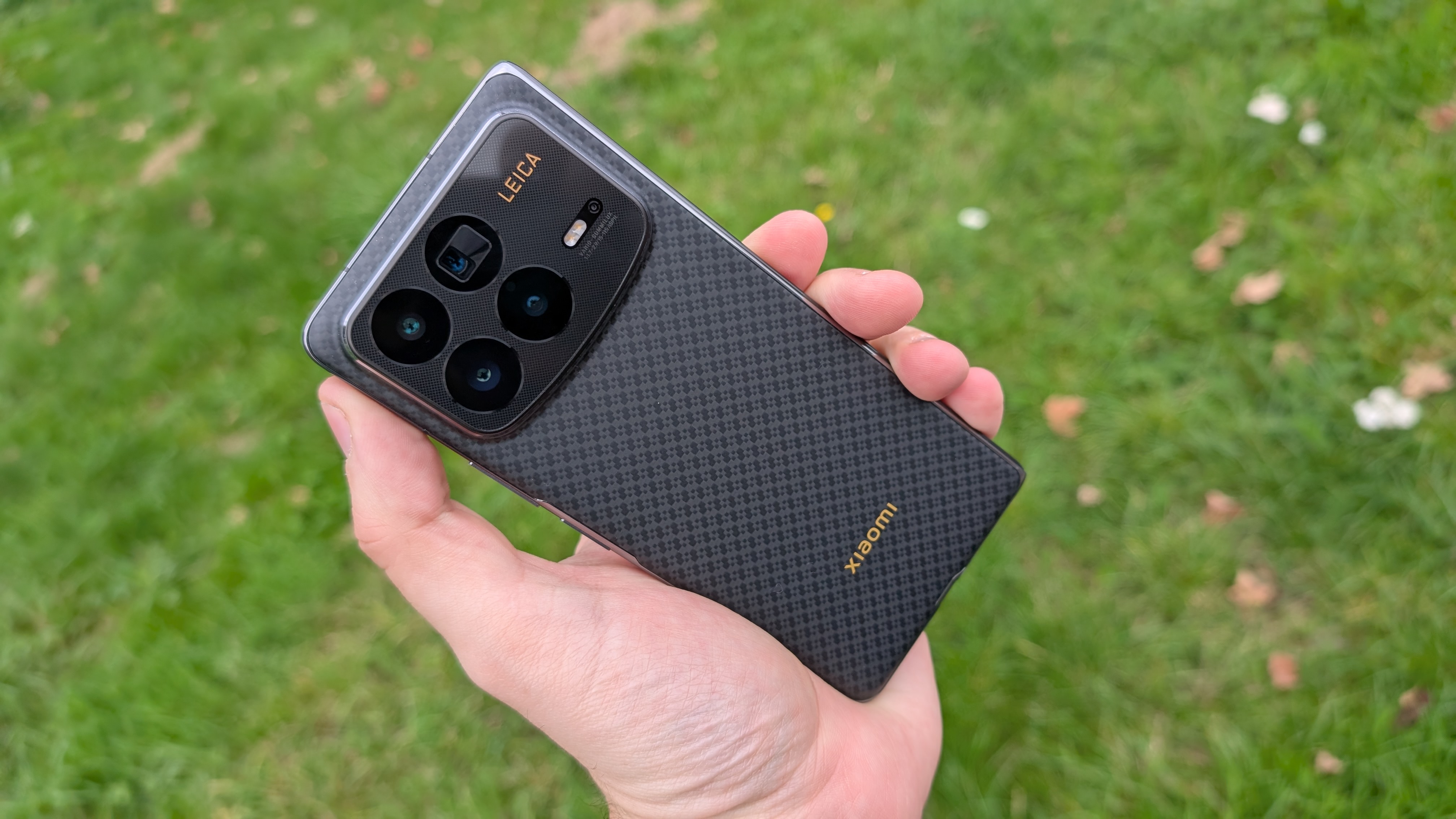
Unfortunately, our video transcoding test didn’t fare so well for the Mix Fold 4. The phone managed to transcode a 4K video into 1080p in 50 seconds — 10 seconds longer than the Z Fold 6 needed and 8 seconds longer than the Honor Magic V3. While Xiaomi's phone managed to beat the OnePlus Open, that latter device is now running almost 2-year old hardware.
Playing PlayerUnknown Battlegrounds on the highest settings on the Mix Fold 4 was a pleasant experience as well. While the graphics were always perfect, they were generally pretty good quality — and the game itself ran very smoothly no matter what kind of shenanigans I was trying to get up to.
Perhaps most importantly, there wasn’t any noticeable heat generation during a standard game. Considering how thin an open Mix Fold 4 is, that’s quite impressive. Clearly Xiaomi’s new 3D cooling system and the extensive use of graphite heat sinks are doing exactly what they’ve been designed to do.
Xiaomi Mix Fold 4 review: Battery & charging
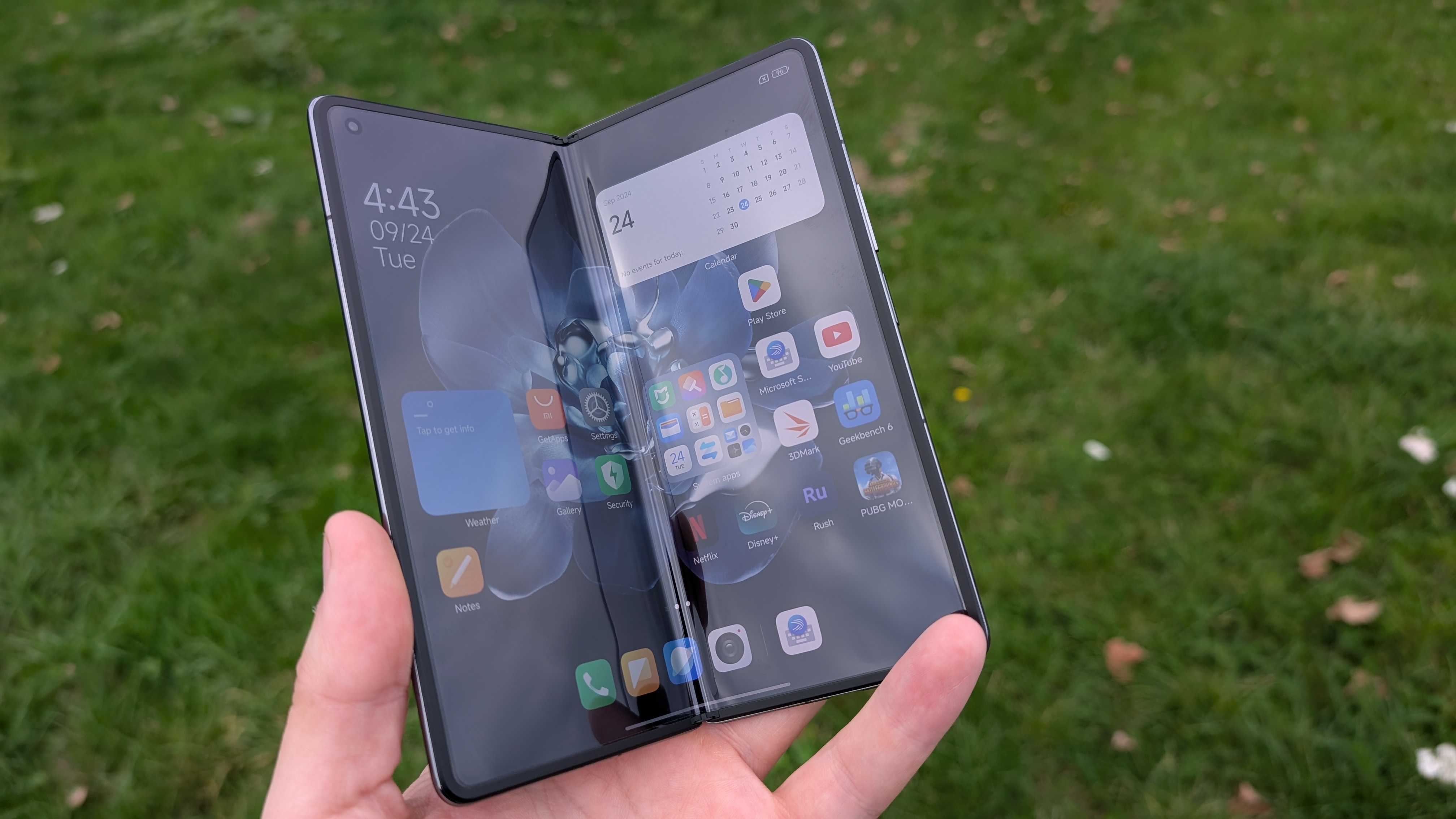
Xiaomi has packed in a 5,100 mAh split-battery that uses a “three-dimensional-shaped battery technology and three-dimensional stacking process” to pack the power pack into an irregular space. Apparently this increases the available capacity by 260 mAh compared to the Mix Fold 3 — while also supposedly helping to improve battery life in the process.
But how long can that battery last? In our testing the Xiaomi Mix Fold 4 lost just 14% after playing a YouTube video on its internal screen at 108p for 3 hours straight with brightness set to 50%. In that same test, the Samsung Galaxy Z Fold 6 lost 18%, while the Honor Magic V3 and Google Pixel 9 Pro Fold lost a respective 20% and 21%.
So while not outlandishly good, Xiaomi has managed to beat out some of its biggest rivals by a noticeable degree. More so when you consider that the Mix Fold 4 has a slightly larger interior display than two of those phones, and it's only 0.2 inches smaller than the Pixel's panel.
The Mix Fold 4 offers 67W fast charging, provided you use Xiaomi’s proprietary charger which is included in the box. There's also support for 50W wireless charging, provided you buy a compatible Xiaomi wireless charger first.
The 67W charger managed to restore the Mix Fold 4 to 31% in 15 minutes, and then up to 59% after half an hour. The battery wasn’t fully charged until the 59 minute mark. Xiaomi advertises the Mix Fold 4 as being able to regain 31% charge in 10 minutes, so obviously this is a little slower than that promise.
Xiaomi Mix Fold 4 review: Software and special features
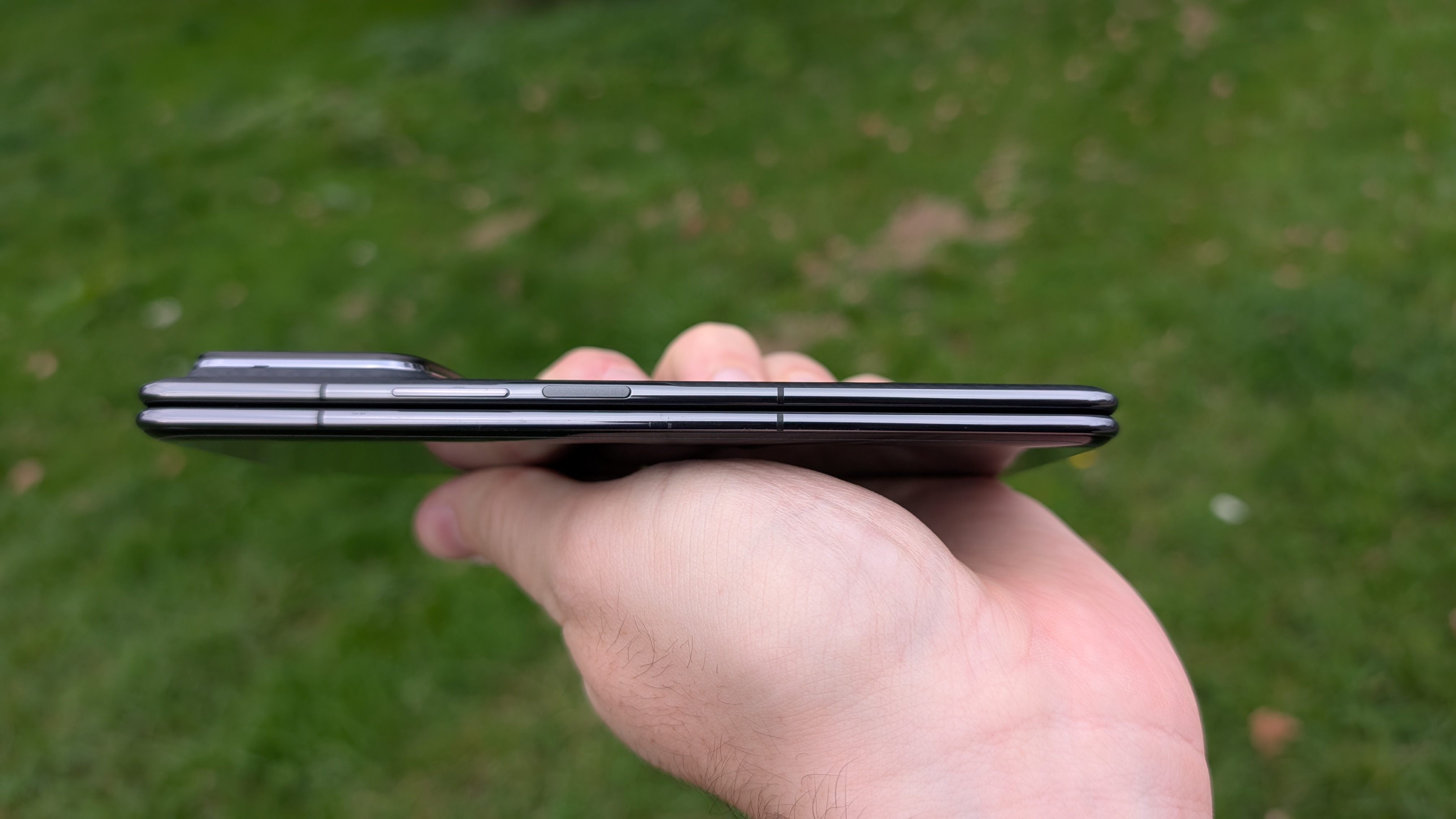
We tested a Chinese version of the Xiaomi Mix Fold 4, running the regional version of HyperOS. That means the software experience is likely to be very different in other regions, which will not have access to Chinese services — like Tiantong satellite communications. International models will also feature Google services built into the OS, as is required on all Android phones sold outside of China.
Hopefully, with satellite communication support available as part of Android 15, we’re hoping that Xiaomi will be able to offer two-way satellite communication on international models as well. But we’ll have to wait and see what form this satellite communication may take.
The one thing we can be sure of is that Xiaomi will likely offer various AI features on international models. Not only did Xiaomi pledge to bring AI phones to the masses earlier this year, it confirmed that HyperOS with up to 60TOPS of AI processing speed will be present on the phone.
The Mi AI on Chinese models include the ability to understand voice commands and make suggestions, a document and object scanner, a call assistant that can make and take calls for you and an AI translation with the ability to handle text and audio in multiple different languages.
Unfortunately, despite changing the system language to English, the Mi AI system had a lot of screens written in Chinese — which I can’t read. The Mi Translate tool did help me understand what was going on, but it wasn’t the simplest tool to use. Without a native English language option, I wasn’t able to spend a great deal of time with the AI tools included with the phone.
Xiaomi Mix Fold 4 review: Verdict
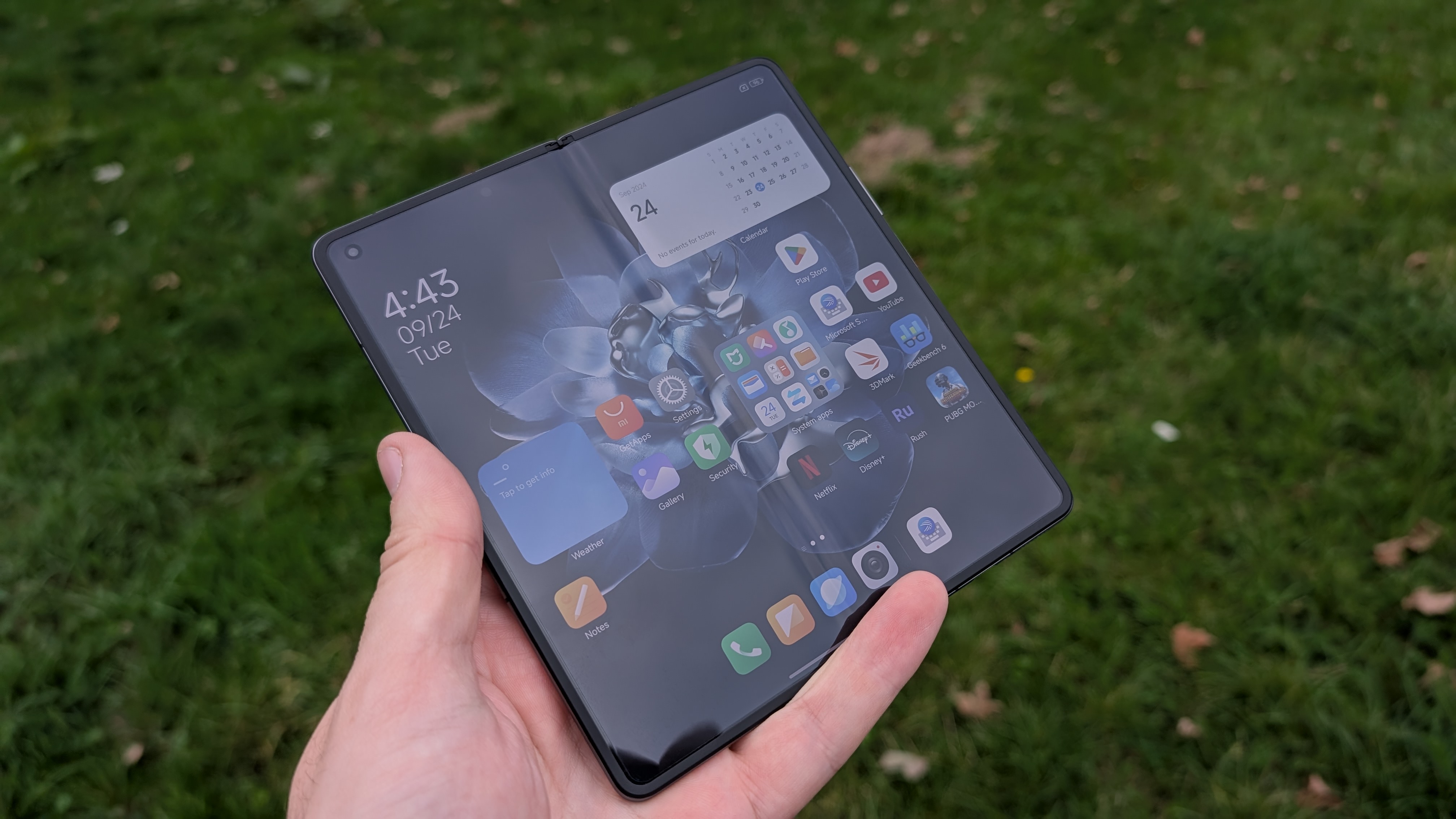
Overall, the Xiaomi Mix Fold 4 is a pretty solid phone. Its battery performance in particular was noteworthy, but the slim design is particularly nice. The crease in the center of the foldable display may be very obvious, but the foldable screen is such a delight to use that I started defaulting to the larger display without even realizing it. And you get to enjoy the satisfying snap of opening and closing the phone while you do.
The cameras were disappointing, but not to the point that I’d actively recommend against them. Just remember that there are better options out there, even among foldable phones — especially if you plan on taking a lot of selfies. It’s also unfortunate that the Mi AI features are not available in English yet — it would be interesting to see how Xiaomi’s offering compares to the likes of Google Gemini and Apple Intelligence when it’s available in other languages.
All told, the Mix Fold 4 is a strong showing from Xiaomi, as the phone does a lot of things right. But we are going to have to wait and see how the software on the international model compares to its Chinese sibling — not to mention the price Xiaomi settles on in other markets.







